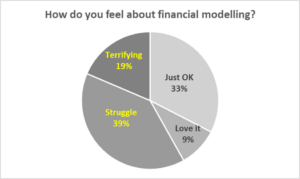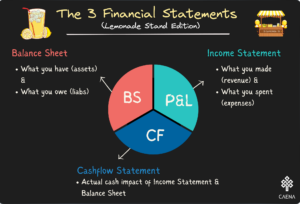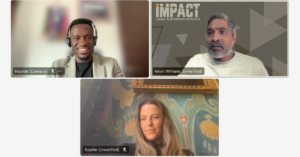Tackling Fundraising, Team Building & Financial Modelling to Turn Ideas Into Successful Businesses
Why would a company that packages water in cans (Liquid Death) be worth nearly 40x as much as a biotechnology company (Bloomer Technology) seeking to save lives through innovative diagnostic products for women? Both companies were formed in the same year, and the water company reports a revenue range of $1 million compared to 1-10 million for the biotech company.

Valuing private companies is a fuzzy exercise that is more art than science but it should be relatively easy to pick at a glance which of two companies is more valuable. A company that packages water in cans (Liquid Death) and a biotechnology company (Bloomer Technology) seeking to save lives through innovative products for women. Both companies were formed in the same year, and the water company reports a revenue range of $1 million compared to 1-10 million for the biotech company.
On January 26, 2022 Caena facilitated a session for the The Institution of Engineering and Technology (“IET”) Mersey and Western Cheshire which was attended by nearly 50 IET members as well as registered invitees. The webinar was titled “From Idea to Scaleup: Tackling Fundraising, Team Building & Financial Modelling to Successfully Commercialise Engineering Innovations.”
The webinar opened with an interactive discussion around the comparative valuation of Liquid Death and Bloomer Tech. It was a bit of a shock when we revealed that Liquid Death has raised over 40x more money for its fun, canned water business than Bloomer Tech has raised for its women focused, diagnostic products. The conclusion from the brief opening exercise was a perfect introduction to the discussion of the day – engineering innovations have to be combined with commercial considerations (which may be less interesting to engineers & scientists) in order to build successful commercial ventures. We covered two main areas – team formation and financial modelling.
Building a dream team
Unarguably, forming a team is the one of the most important tasks every innovator faces on the path to taking their product to market. The challenge is that this is a task that is extremely difficult to find a formula that works all the time. However, we discussed a few DOs and DON’ts to help engineers and innovators crack this task
- Build a team with complementary skills: when looking for co-founders and early team members, it is not enough to default to friends, colleagues and those within your immediate circle to join your team. The general guidance is that at the very least, your founding team should comprise founders who can deliver the product AND sell.
- Don’t rush, be patient: finding the right people takes time and if you rush into it, you will rush out of it as well. There’s a joke in the venture world that it is easier to divorce a spouse than to get rid of an investor you don’t get along with.
- Ensure your values align: you want to change the world but your partners want a quick buck. NGMI! You are Not Going to Make It.
Financial modelling: selling your vision with numbers
Most founders, even those with strong analytical skills freeze up when thinking of financial projections for a new business. According to a poll during the webinar, the IET audience wasn’t much different with almost 60% reporting either struggling or being terrified of financial modelling.

The objective of this section of the webinar was to demystify the concept of financial modelling so entrepreneurs realise it is not as terrifying as it is made out to be. In an interactive discussion with great participation from the audience, we covered a broad overview of financial modelling as it relates to fundraising:
- It’s all about storytelling: if there is one innate skill in humans, it is telling stories. In our experience speaking to hundreds of founders, when they frame fundraising and financial modelling in terms of storytelling, the process starts to make sense as it is a concept everyone understands. Financial modelling is simply selling a vision with numbers. Like every good story, it has to be well thought out and structured. This blog details financial storytelling best practices. The most important thing to remember is that your story has to be consistent, concise and compelling.
- Know when to use different elements of financial models: when founders hear “financial model” they instinctively think of a complex, three-statement financial model. In the context of fundraising however, there are two other elements – charts and metrics. A common mistake founders make is spending thousands of pounds and wasting months to build a complex model when a simple chart combined with key metrics would suffice for a pitch deck.
- Assumptions are the bedrock of financial models: we described the importance of assumptions to the process as akin to the building blocks of a complex tower. An engineer who wants to achieve a fully functional tower but is able to decompose the building into constituent parts is 80% on the path to achieving their objectives. As an entrepreneur, it is important to understand what the drivers of revenues and costs are and how these combine together to form a full model. See more details here on how to put together assumptions to build a compelling financial story.
Today, most founders have to rely on consultants to help put together their forecasts. Caena’s approach is premised on empowering founders to build their own financial models and thus control their storytelling. As a member of the audience said, “A consultant has to rely on you to provide the assumptions that YOU are making for YOUR business. A good consultant will hold your hand while you are getting YOUR story straight / consistent. Any reworking of your assumptions will add to their timescale/costs.”
With Caena, founders can generate projections, metrics and charts in less than 30 minutes. Yes, it’s that simple. Get started for free here.





